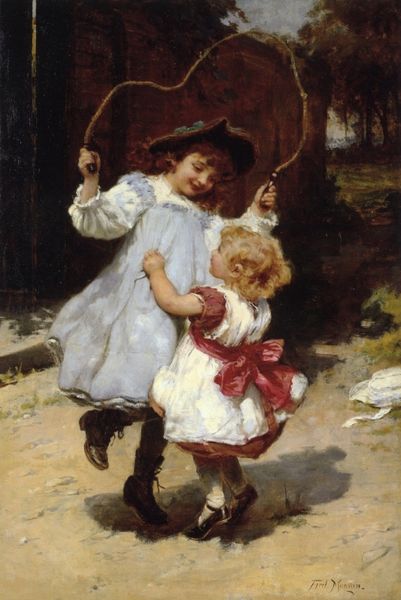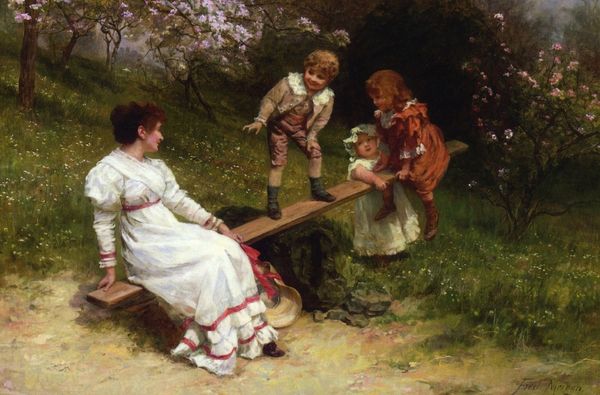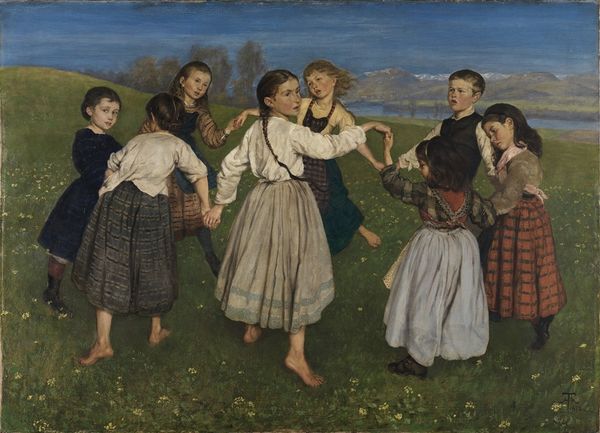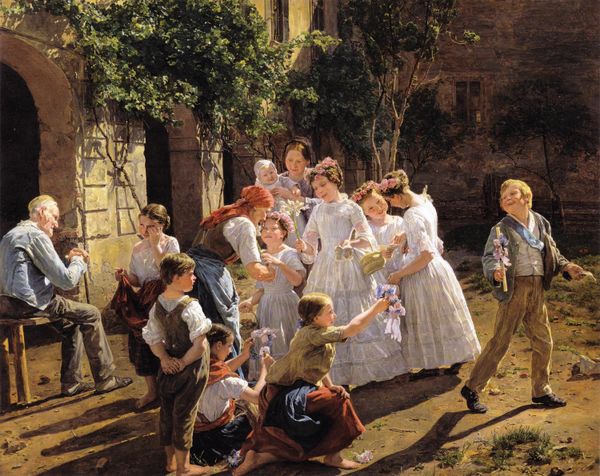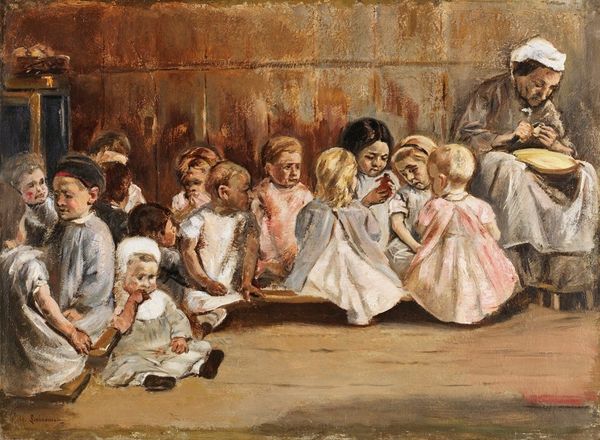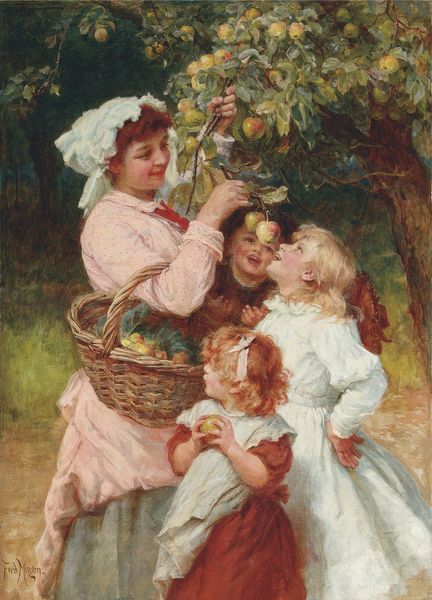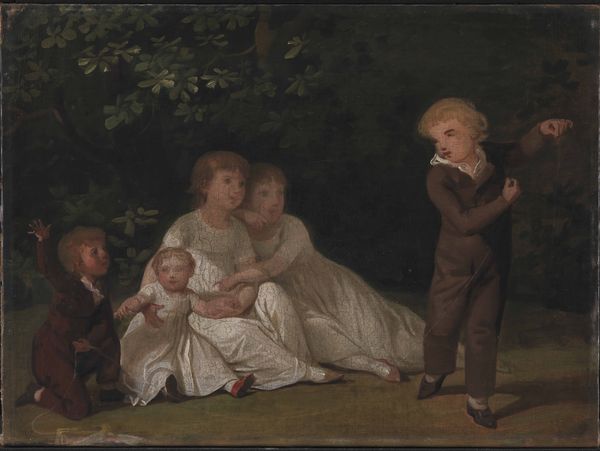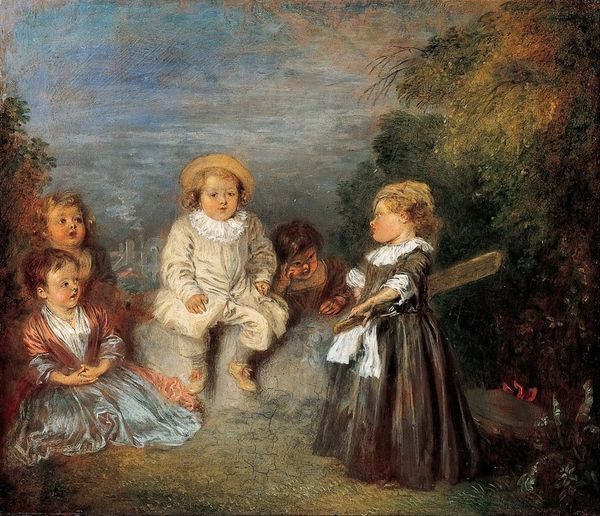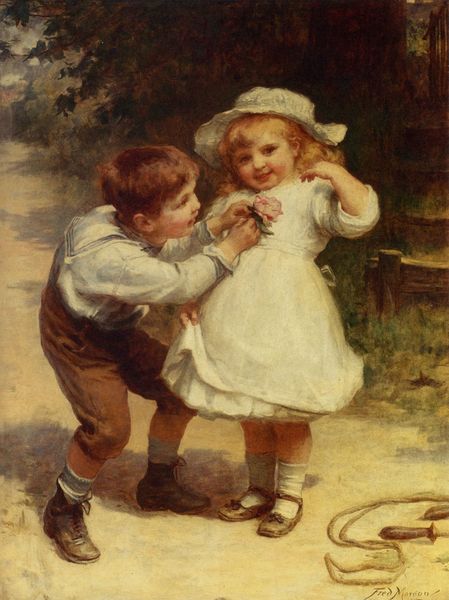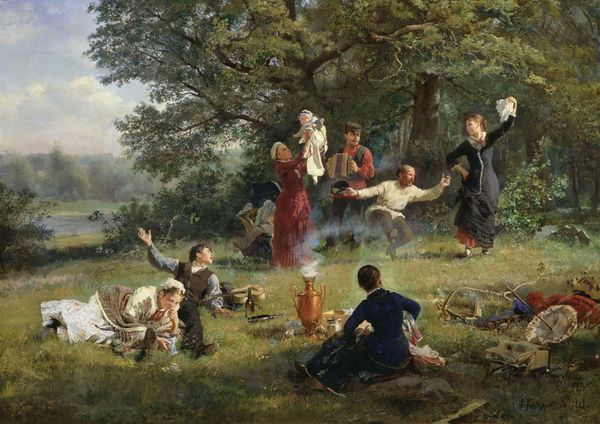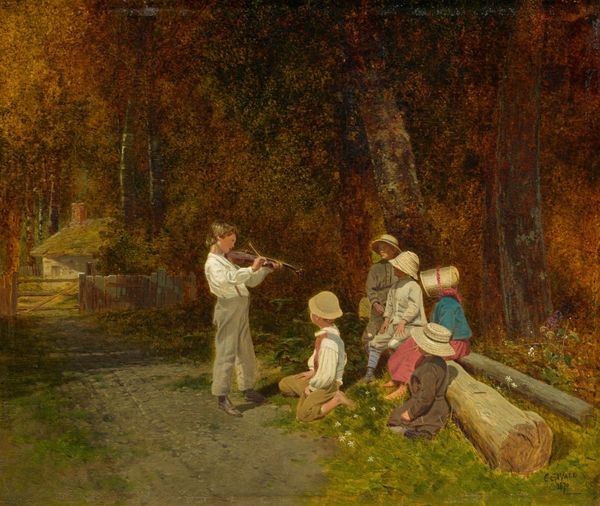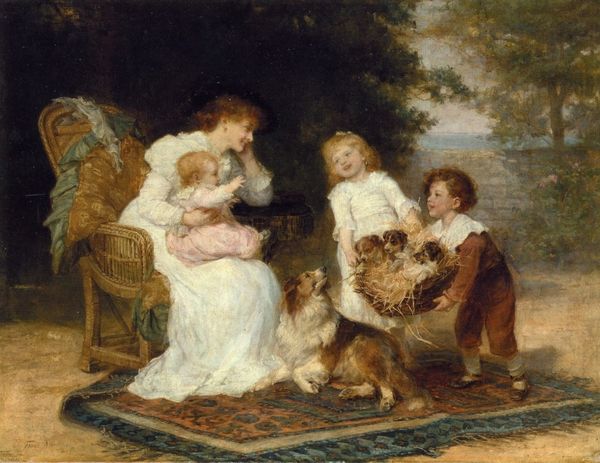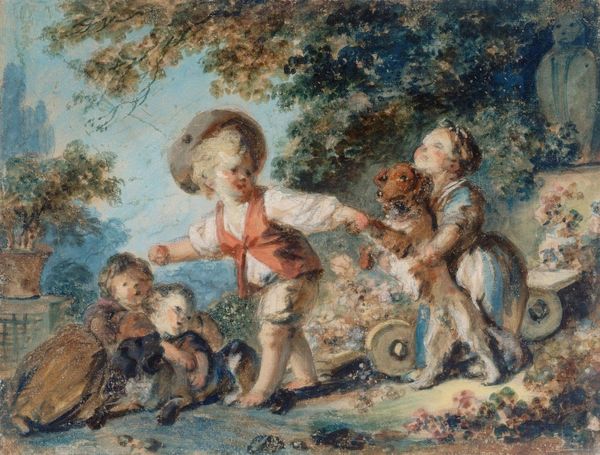
Dimensions: overall: 32.6 x 40.9 cm (12 13/16 x 16 1/8 in.) framed: 45.4 x 53.7 x 5.7 cm (17 7/8 x 21 1/8 x 2 1/4 in.)
Copyright: National Gallery of Art: CC0 1.0
Curator: What strikes me immediately about this oil painting, entitled "Children Playing in a Park," from around 1860 by Hugues Merle, is its overwhelming sense of innocence. Editor: Yes, it is infused with the aesthetics of Romanticism, certainly, yet the setting also situates childhood within broader societal contexts of its era, specifically in France. There's something constructed here. Curator: You sense a performance then? Though their clothing suggests their social standing—look at those little ruffled pants and elaborate dresses!—there is something quite timeless in the act of children holding hands in a circle. Editor: And their expressions! Notice the face of the girl front and center. Her bright, beaming presence radiates the perceived virtue of youthful innocence onto the viewer, while perhaps masking or overlooking more troubling realities of the era for children across various class lines. Is this idyllic depiction really reflective, or merely wishful thinking? Curator: Well, artistic license often paints the most desirable picture! I wonder if it was a commission piece, and what conversations surrounded it in terms of genre. Merle often explores sentimental themes, but how do these representations engage with Victorian ideals about family, childhood, and leisure? Editor: Exactly. Representations of childhood in this period became closely tied to national identity and notions of moral progress. Children become vessels onto which adults project all of their expectations about the future, conveniently ignoring labor exploitation or even neglect in other social strata. The symbolism within these canvases acts almost like propaganda. Curator: I see that reading, yes. These kinds of genre paintings often omit, or whitewash rather, less pleasant truths. They function almost as performative affirmations of the family values, ones which were probably more desired than actually in place across various demographics. Editor: It makes one think about how historical images become canonized in public consciousness and how those perceptions play out even now. These constructions definitely influence how society conceptualizes childhood now, too. Curator: Hugues Merle’s skill in capturing the play of light and conveying emotion is certainly undeniable. Considering the wider sociopolitical background adds much-needed nuance to the image though, shifting our attention beyond its aesthetic surface. Editor: Precisely, it really allows us to dissect both how childhood gets depicted as well as its very representation within broader culture through various media. It shows how images uphold ideologies, and what remains unacknowledged within their frameworks.
Comments
No comments
Be the first to comment and join the conversation on the ultimate creative platform.
